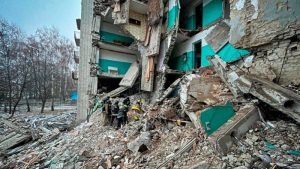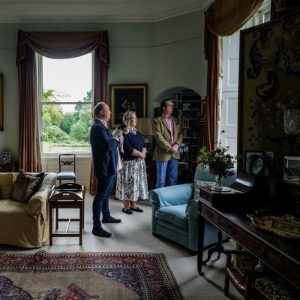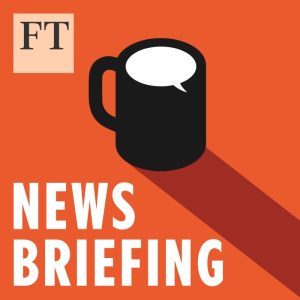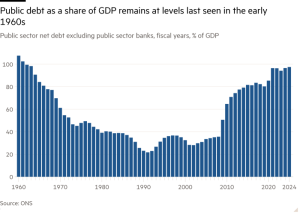Journey to Kenya, and the cradle of man
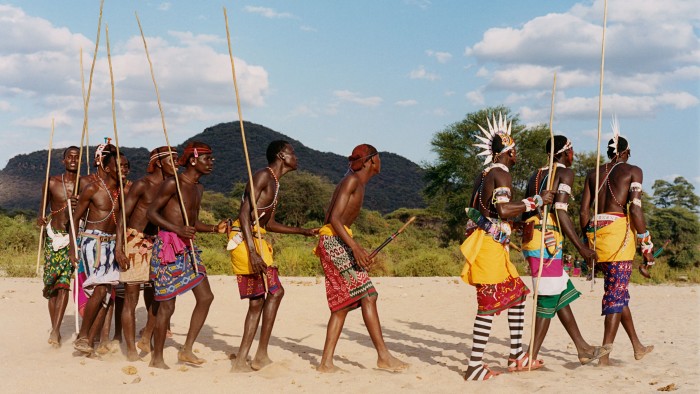
To the Turkana people it is Anam Ka’alakol, the Sea of Many Fish. To most Kenyans it is Lake Turkana, the world’s largest desert lake, in the badlands of the northern frontier. To generations of hominid fossil hunters, it is simply where it all began.
Picture the Mediterranean transplanted to a Martian landscape, and you’ll get an inkling of the intense, brooding beauty of Lake Turkana, whipped by winds, pounded by a jack-hammer sun and bounded by folds of pink volcanic rock. At 250km long and a spindly 30km wide, the lake lances like a jade spear through the parched north-lands of Kenya, its northern tip stabbing into Ethiopia.


In this brutal landscape, scattered communities survive on cattle, camels and goats, or Nile perch pulled from the lake’s crocodile-studded waters. Pastoralists move about it, not always in harmony, since many believe God bestowed all the world’s cows on them, a set of convictions with predictably unfortunate results. Turkana and Samburu rub shoulders uneasily on the lake’s southern fringes; there are Borana, Gabra, Rendille and, a little further afield, the Pokot, with their fierce reputation for banditry.
It is on Lake Turkana’s ancient shores that successive generations of paleoanthropologists have unearthed some of the most compelling evidence of our common ancestry. In 1984, the Kenyan fossil hunter Kamoya Kimeu spotted what turned out to be “Turkana Boy”, the near-complete fossil of a juvenile Homo erectus whose life was cut short some 1.6 million years ago on what was then the lake’s western shore. In 2011, archaeologists took a wrong turn in the desert, only to stumble upon stone tools made 3.3 million years ago by our hominin ancestors – 700,000 years earlier than previously thought. Nature magazine called it “The Dawn of Technology”.
My trip begins with a bit of late-stage technology: a De Havilland Dash 8 prop plane that flies me, on a rare visit for a non-scientist, to the Turkana Basin Institute (TBI). The brainchild of the late Richard Leakey, who with his wife Meave and Kenyans like Kimeu were part of a world-famous fossil-hunting collective known as “the Hominid Gang”, the institute is a research centre, not a tourist destination. My visit, including a night’s stay, was finagled by Africa fixers Journeys by Design, whose founder, Will Jones, has developed a fascination with what he calls the “human journey”, from our early ancestors through to modern-day cultures, and an ambition to build a travel offering around it.



Jones also organises trips to Chad, where the earliest hominid skull, six to seven million years old, was found; and Ethiopia, where the discovery in 1974 of Lucy, a 3.2 million-year-old female Australopithecus afarensis, upended the world of palaeontology. If your idea of a holiday is visiting old relatives, Jones is your man.
The Dash 8 flies nearly two hours north from Nairobi’s Wilson airport, leaving behind the familiar green of savannah and landing in Lodwar, in the rock and sand of the north. It feels not so much like a different country as a different planet. We rattle 40 minutes along desert roads past scattered manyattas – villages of domed huts shaped like Baci chocolates, only covered in straw and rainproof polythene instead of silver foil. Small children wander lackadaisically behind herds of goats.
The squat buildings of the institute, the biggest structures for miles, sit on a dramatic rocky bend of the mud-brown Turkwel river, which oozes into Lake Turkana’s western shore. It’s one of three rivers that feed the saline lake; the biggest, the mighty Omo, roars down from Ethiopia. With no outflow, the only escape is evaporation; the trapped water has an end-of-earth feel.


I am met by Christine Atabo, TBI’s collections supervisor, a shy but confident 31-year-old. As a girl born into a polygamous, semi-nomadic Turkana family, school was never an option. But she went anyway. “We didn’t have electricity, we didn’t have mattresses and we didn’t have good utensils, just wooden ones crafted by my mother,” she says. “I wanted to taste the goodness that education brings to people.” She would trace letters in the sand, copied from borrowed textbooks. One day, she sneaked off to class. She advanced rapidly, going on to high school and eventually to university; she now oversees the fossil collection at TBI’s Turkwel campus and liaises with the Turkana community, who can be suspicious of the institute’s penchant for digging up dead bodies.
That night, I sleep out on the veranda. An orange sun smudges the horizon; as the birds stop clattering on the tin roof, a delicious breeze, sent by the lake, whips up like air conditioning. I drift off watching my mosquito net fluttering in the moonlight.
The next day Atabo shows me around the fossil collection – a large, half-lit room with rows of stacked wooden boxes arranged by geological era, which I quickly take to thinking of as the “bone library”. At the back is the Cretaceous-period section, from 145 million to 66 million years ago. She casually removes the lid of one box to expose the upper jawbone of a carnivorous dinosaur known as an Abelisaurid. I spend the next hour, like a child in an app store, browsing labels and opening boxes: a hyrax from the Oligocene (34 to 23 million years ago), a hippopotamus skull from the Pleistocene (2.6 million to 11,700 years ago) and a modern-day python skeleton as thick as my arm. Next door Simon Eporon, a technician from the Turkana community, uses a pencil-lead-thin drill to uncover the fossil of an Ice Age giraffe tooth.



Scientists from universities associated with TBI, many of whom have built careers on particular dig sites, return each year to refresh their search. Francis Ekai often accompanies them. He is so adept at finding fossils they call him “the human GPS”.
Before we take off for our next destination, Atabo shows me one of Lake Turkana’s most startling secrets. In 2012, archaeologists excavated the site of what they believed was 10,000-year-old evidence of a massacre – among the earliest ever recorded. Inside a box is a crushed skull, the remains of one of 27 people who suffered a violent death. Another has an arrow head embedded in its cranium. Scientists say the mass grave suggests that forager-hunters engaged in warfare, lending credence to the argument that war is in our DNA, not a social consequence of hierarchies and territorial disputes.
“It’s the way the Turkana and the Pokot fight now,” says Atabo of the perpetual struggle over cattle. “You cannot sleep today if someone was killed yesterday. We will just go and get revenge.”
The flight across the southern tip of Lake Turkana to the South Horr valley is spectacular. We pass initially over a terrain veined by dry river beds and speckled by village compounds; then, some 20 minutes in, we start bouncing on thermals as we traverse grooved mountains like brains made of rock. On the right side of the tiny Cessna is a Mars-scape; on the left, the blue-green of Lake Turkana. Black lava has spewed across the desert floor and emerald-green waters pool. Mud oozes. It is not hard to imagine this cauldron as the crucible of life.



We are met by Amory Macleod, a member of one of Kenya’s most famous safari families. With his partner Karina Jessop, he oversaw the rebuilding of Koros Camp, a hospitable and quietly luxurious bolthole in this inhospitable wonderland. After a tour of the camp – clean lines, adobe-walled rooms and decluttered interiors that would have Marie Kondo scratching her head – we lurch off on quad bikes along the dried-up river bed. There’s something wrong about hurtling in fifth gear towards a gin-and-tonic sundowner past loping camels and waving children, though no doubt I’ll get over it.
We spend that night not at Koros, but in a satellite fly camp. Apparently some guests are nervous about sleeping in “the bush”, but the experience is so cosseted and choreographed – more braised Mediterranean fennel, anyone? – that only the most skittish has anything to worry about. After a nightcap by the fire and an enamel pail of hot water brought tentside, we retire to pod-like mosquito-net tents mounted on six-legged cots.
A Land Cruiser speeds us towards the lake shore the next morning. We pass Africa’s biggest wind farm, installed, appropriately, in one of its windiest spots. Ranks of turbines crank round, producing electricity to be transmitted south. There’s a surreal quality to the gleaming-white structures, like upended jet planes impaled into the ground, made weirder still by the trains of camels plodding beneath the whirring propellers.


Further on, closer to the lake, are Turkana villages. There’s no sign of running water, let alone the electricity being cranked out nearby. Women sit cross-legged pounding rocks, apparently for the walls of a government school being built on the shore.
The water is mirror-flat, though Macleod warns that winds whip up in an instant, turning the lake into a choppy hazard. We spend a while fossil-hunting on the rocky beach, uncovering ink-black shards that, according to Macleod, are million-year-old fish bones. Admittedly not the Missing Link, but not bad for half an hour’s beachcombing. Across the water, on the volcanic rocks off South Island, Nile crocodiles lounge with prehistoric menace, easing into the lake where they lie smiling beneath the surface. As we head back, the wind picks up and the boat slams from stubby wave to wave. I’m just recovering my land legs when we’re ushered into a helicopter that hurtles off, doors open for added adrenaline, for a tight circle around Nabuyatom, a spectacular inverted volcanic cone.
The pilot lands with pinpoint precision on the floor of a rock-strewn valley and leads us for a few minutes to a slabby escarpment whose stones have slid down over the aeons into a cracked mosaic. There, etched into the rock, are unmistakeable depictions of giraffes, made 1,500 years ago by people who must have lived here when large animals were common. Today, little game remains. The last rhino was poached several years ago. That night I wake to the clatter of the ceiling fan, confused as to whether it’s a wind turbine or the blade of a helicopter.


For our final stop we fly south, leaving Turkana County and moving into Samburuland. The terrain is greener, if hardly lush. To find water, the Samburu dig into the dry riverbeds in ceremonies known as “singing wells”. The Samburu are closely related to the Maasai, the Turkana and the Pokot, all Nilotic peoples who moved south from Sudan and Ethiopia over several hundred years. Like squabbling brothers, they are locked in cycles of cattle raid and counter-raid. In 2021, Kenyan media reported 14 people dead in just one incident.
Two Samburu warriors, dressed in beads and bright kikoi skirts, their torsos naked, meet us at the airstrip. They introduce themselves as “Daniel” and “Joel”, though it transpires they are really called Legalgoroule and Loltienya, names deemed too tricky for the tourist tongue.
Kalepo Camp charges guests a conservancy fee of $150 per night, of which 57 per cent goes to the community and 38 per cent to anti-poaching. Safari veterans Robert and Storm Mason, who opened Kalepo in late 2020, spent time running a luxury hotel in India, and it shows. Echoes of the Raj include a beige canvas camp, manicured lawn and brass fittings. All that’s missing are the polo horses. We dine at a theatrically set table under the moonlight on the sandy riverbed – a chicken curry, replete with Indian breads and chutneys. Elephants often gather at the nearby watering hole while guests quaff sauvignon blanc, but tonight the elephant in the room is that there are no elephants; it has recently rained, and evidently there is plenty of water to be had elsewhere.


Next morning, we leave at 6am for a nearby Samburu village. Each of the 20 or so huts is surrounded by a fence; gates are always situated on the north and south of the homestead, symbolic of the Samburu’s march southwards along the River Nile. The houses are arranged in order of seniority, starting with the elder and his wives. Joel launches into an explanation of burial procedures: babies apparently are interred inside the boma with the goats, a grandmother gets eternal rest with the cows and younger people are buried outside the homestead. Warriors – young men who have been circumcised but cannot yet marry – don’t get buried at all. Unless they die in a cattle raid, their deaths are considered a curse, Joel says. Their bodies are laid out in the open, their heads on a wooden pillow, left for scavenging hyenas.
It sounds far-fetched, but Robert had told me the same story. A year ago, he said, a warrior had been deposited behind a nearby village. I had a vision of guests settling down to tea and scones at Kalepo while nearby hyenas tucked into something more substantial.
Daniel tells me how he got an education – the result of banishment from his house after he mislaid three of his father’s goats. Released from parental oversight, like Atabo at the Turkana institute, he found himself in a school where he excelled, mastering English. He now pays for his youngest sibling’s schooling.
Unlike Atabo, who has made a break with her Turkana heritage, Daniel, it strikes me, is an avatar of himself, an interpreter of his culture for foreign visitors. He owns goats, went through the circumcision ritual and professes a dislike for Turkana, who are not circumcised. On the other hand, he now eats vegetables – he didn’t even see one until he was eight, he claims – and wants to buy a professional camera so he can become an Instagram celebrity. “Because of education, our culture is dying,” he tells me. Whether he says so with regret or satisfaction is hard to tell.
David Pilling travelled as a guest of Journeys By Design; a private five-night journey to Lake Turkana and the northern deserts costs from $10,835 per person including private charter aircraft and private use of Kalepo and the Koros fly camps. A separate donation is made to Turkana Basin Institute
#Journey #Kenya #cradle #man





